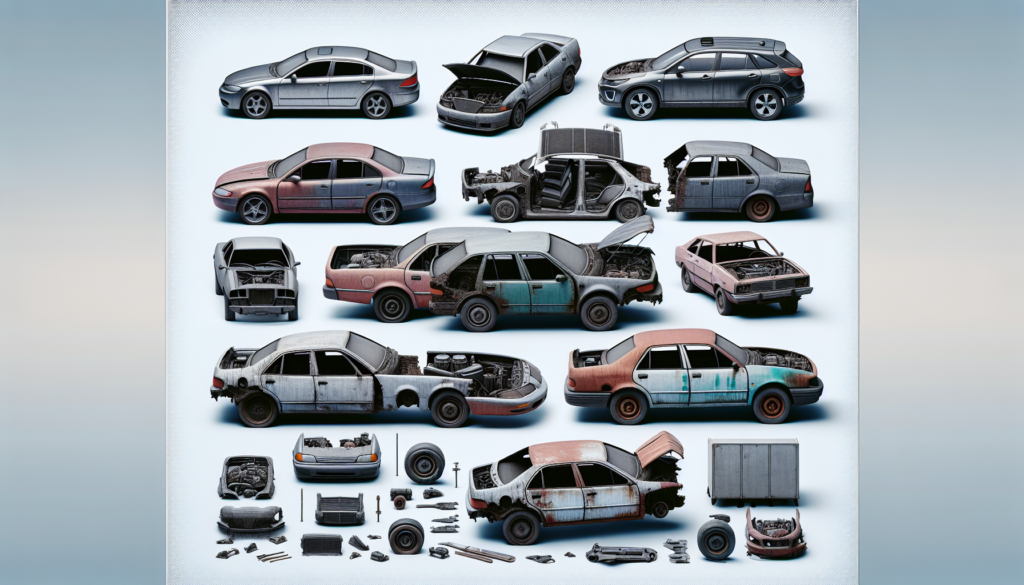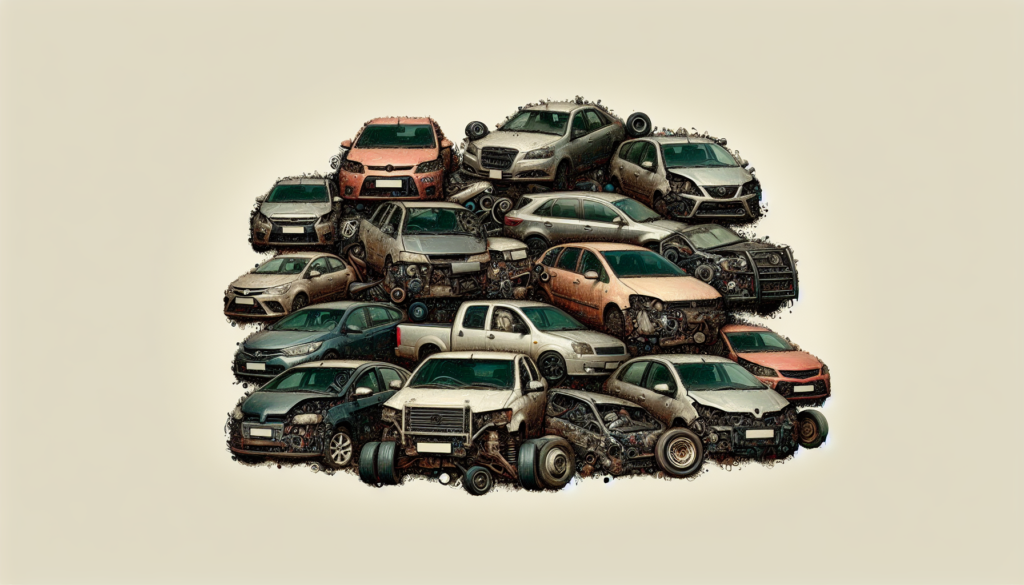In the expansive realm of automotive commerce, discerning the optimal choice often requires navigating through a mire of intricacies. Your understanding, however, shouldn’t end only at identifying the best vehicles on the market; it is equally crucial to know about the poorest performers and avoid them. This article, “Worst Cars To Buy,” offers an engaging exploration of this lesser-illuminated side of the coin, providing invaluable insights into various models that have proven to be disappointing in regard to aspects such as reliability, safety, resale value, and overall performance.
Overview of Worst Cars to Buy
There are numerous factors that may qualify a car as one of the worst to buy. Such a designation often comes due to poor performance, reliability issues, high maintenance costs, and often an unimpressive resale value. This overview provides insight into general characteristics that are typical of unexceptional cars, common problems discovered in such vehicles, and what factors directly influenced their poor ratings.
General characteristics of worst cars
Most experts highlight the worst cars based on numerous attributes such as high depreciation rates, inadequate safety scores, lackluster performance, low reliability ratings, and poor fuel efficiency. A problematic repair history and expensive maintenance costs are other key determinants of a bad vehicle. Sometimes, even the resale value of the cars significantly contributes to their reputation.
Common problems found in worst cars
Common problems found in inferior cars include electrical system problems, engine irregularities, transmission failures, and brake issues. These can make the car unstable, unsafe, and frequently in need of expensive repairs. These issues can persist even after several repair attempts, which is frustrating and time-consuming for the owner.
Factors that influence a car’s rating
The quality of the car’s build, its handling, safety measures, efficiency, resale value, and satisfaction of consumers all play a role in determining a car’s rating. Independent companies conduct thorough testing and surveys to decide upon these ratings. Any weakness in these areas can substantially affect a car’s overall score.
Most Unreliable Car Brands
Assessing the reliability of a car brand involves looking at the life expectancy of its vehicles, their maintenance costs, and how often the brand’s cars encounter problems. Various agencies conduct surveys and gather data on these points to build a reliability index for each brand.
Overview of car brands with lowest reliability
Certain car brands are consistently cited as having below-average reliability based on the frequency, severity, and variety of issues that their vehicles experience. These brands frequently have a higher percentage of their cars experiencing significant issues, negatively affecting their reliability ratings.
Factors that influence brand reliability
The reliability of a car brand is often influenced by several factors, such as the quality of workmanship and materials, technological advances implemented into the vehicles, and the manufacturer’s respond to consumers’ issues and recalls. The drive to reduce costs can sometimes lead to reduced quality, which in turn can result in a lower reliability rating.
Most commonly reported issues with these brands
Issues frequently cited with these unreliable brands could range from basic malfunctioning parts to a complete engine failure. Transmission troubles, brakes system faults, electrical issues, and poor quality materials, causing durability problems are some common issues.

Worst Cars in Terms of Safety
Car safety is an essential parameter for every potential buyer. Unfortunately, some cars do not fare well in terms of safety, evidencing low ratings in crash tests, and with numerous safety recalls. Let’s explore these aspects in more detail.
Lower-rated cars in crash tests
Safety agencies conduct crash tests to measure a vehicle’s capacity to withstand accidents. Cars with lower safety ratings do not perform well during such tests, indicating a likelihood of fatal injuries in a real scenario. These tests include front, side, roll-over, and rear crash tests, potentially involving impacts at different speeds.
Cars with abundant safety recalls
Safety recalls are often a clear indicator of unsafe cars. These recalls usually happen when a manufacturer or the National Highway Traffic Safety Administration (NHTSA) determines that a vehicle has a safety-related defect. Cars with numerous recalls pose a risk to the passengers’ safety.
Common issues affecting car safety
These might include faults in the airbag system, poor-quality safety belts, malfunctioning anti-lock brakes, lack of stability control, and ineffective collision alerts. Other issues interfering with safety ratings involve faulty tires and defective headlights.
Poor Performing Cars
Poor performance in a car is often an annoyance at best and a danger at worst. Here we will look at cars that underperform in their class, have subpar handling and other frequent performance issues.
Cars with underperforming engines
Underperforming engines affect a car’s overall performance. They manifest in various ways, such as excessive oil consumption, inability to accelerate properly, and erratic performance. Such engines often lead to frequent breakdowns, inefficiency, and poor overall car performance.
Vehicles with poor handling
Handling accounts for a car’s steadiness, maneuverability, and agility on the road, among others. Poor handling leads to reduced stability on sharp turns, longer stopping distances, reduced braking performance, uncomfortable rides, and a heightened risk of accidents.
Common performance issues in these cars
Common performance issues include poor acceleration, rough gear changes, inefficient brakes, overall instability while driving, and reduced fuel economy. Any car facing these problems will struggle in its performance.

Least Efficient Cars
Fuel or energy efficiency is a key consideration in a car purchase decision. Some cars, however, fail to provide satisfactory mileage or energy utilization, making them uneconomical choices for the consumers.
Cars with lower gas mileage
Lower gas mileage means a car travels fewer miles per gallon of fuel utilized. This not only impacts the owner’s wallet but also the environment due to higher emissions.
Electric vehicles with shorter driving range
In the context of electric cars, those with a shorter driving range are not typically favored. Buyers tend to prefer models that cover significant distances before needing to plug in for a recharge.
Hybrids that fail to impress in efficiency
While hybrid car technology aims to make vehicles more fuel-efficient, there are some models that fall short. Inefficient hybrid cars don’t offer much savings on fuel costs, nor do they substantially reduce the carbon footprint, thus undermining the primary purpose of their hybrid status.
Cars with Worst Resale Value
Another critical concern for many car buyers is how much value their vehicle will retain over time. Cars with high depreciation rates are typically undesirable given their lower resale value.
Depreciation factors in cars
The most common factors affecting car depreciation include the brand’s reputation, vehicle condition, mileage, age, and the demand for that particular make or model in the used car market.
Brands with the worst depreciation rate
Certain car brands are known for their vehicles depreciating rapidly. This could be due to a variety of reasons – from issues related to reliability, performance, style, or the manufacturer discontinuing a certain model.
Specific models with high depreciation rates
Even within high-performing brands, certain models may experience higher-than-average depreciation. This could be due to that specific car model having a poor reputation or a lower demand in the resale market.
Uncomfortable Cars to Drive or Ride
Comfort is an important aspect in a car. However, some cars lack this factor due to their poor ride quality or an uncomfortable interior.
Cars with poor ride quality
A car’s ride quality refers to a driver’s and passenger’s perception of comfort while in motion. Cars with stiff suspensions or those which fail to absorb road imperfections well tend to have a poor ride quality.
Uncomfortable car interiors
When it comes to car interiors, comfort can mean a spacious cabin, relaxing seating, easy controls, and a quiet ride. Cars lacking these features often provide a less comfortable ride.
Common complaints from drivers and passengers
Drivers and passengers may lodge complaints about seats that do not provide adequate support, too much road or wind noise, lack of sufficient legroom or headroom, and ineffective climate control systems.
Worst Luxury Car Models
Even high-priced luxury cars can sometimes miss the mark in terms of their perceived quality, durability, and performance.
Luxury cars failing to meet standards
These luxury cars may not offer the expected level of comfort, performance, or reliability. Such vehicles tend to fall short in terms of their technological sophistication, aesthetic appeal, or craftsmanship.
Common issues in high-end vehicles
Just like any other category, luxury cars may face mechanical issues, electronic malfunctions, or damage to their expensive components. It’s also common to find owners dissatisfied with the car’s gas mileage or the cost of maintaining it.
Brand reputation and negative reviews
Opinions about a car or car brand can be heavily influenced by the number of negative reviews, customer experiences, and the overall reputation of the brand. Luxury car brands are no different. Poor customer service and negative ownership experiences can tarnish a brand’s reputation.
Worst Electric and Hybrid Cars
With the growing popularity of electric and hybrid vehicles, the market has seen a fair share of underperforming models that do not match up to their conventional or higher-performing counterparts.
Electric cars with lower reliability
Lower reliability in electric cars is often a result of problems with their battery, electric motor, or electronic systems. Given the high replacement costs of these components, such issues highlight their unreliable nature.
Hybrids with frequent issues
Hybrid cars could face problems with the complexity of their dual engines, battery failures, or poor fuel efficiency. The cost of replacing batteries in older hybrid models could be prohibitive.
Common complaints about electric and hybrid cars
Common complaints include limited driving range, long refueling or charging times, lack of engine noise, and expensive battery replacements.
Cars with the Worst Maintenance Costs
High maintenance costs can be a considerable concern for car owners and potential buyers. These costs can skyrocket due to factors such as the complexity of parts, their replacement costs, and the car’s overall reliability.
Factors contributing to high maintenance costs
Factors contributing to high maintenance costs include the frequency of mechanical issues, the cost of parts, the complexity of repairs, the car’s age, and the need for special or expensive fluids.
Brands with expensive repairs and maintenance
Some car brands are infamous for having high maintenance and repair costs. Notably, luxury brands and certain European brands, with their complex systems and expensive parts, often top the list.
Cars known for frequent and costly breakdowns
Most of the cars known for frequent and costly breakdowns have one thing in common: low reliability. This primarily involves the frequency of unexpected breakdowns causing expensive repairs and the replacement of parts.
To conclude, given the variety and complexity of factors that can affect each car’s performance, reliability, safety, and cost-effectiveness, a comprehensive approach to car selection is advisable. As the saying goes, ‘Better to be safe than sorry’, particularly when your vehicle choice can so materially influence your and your family’s day-to-day life experiences and safety.


